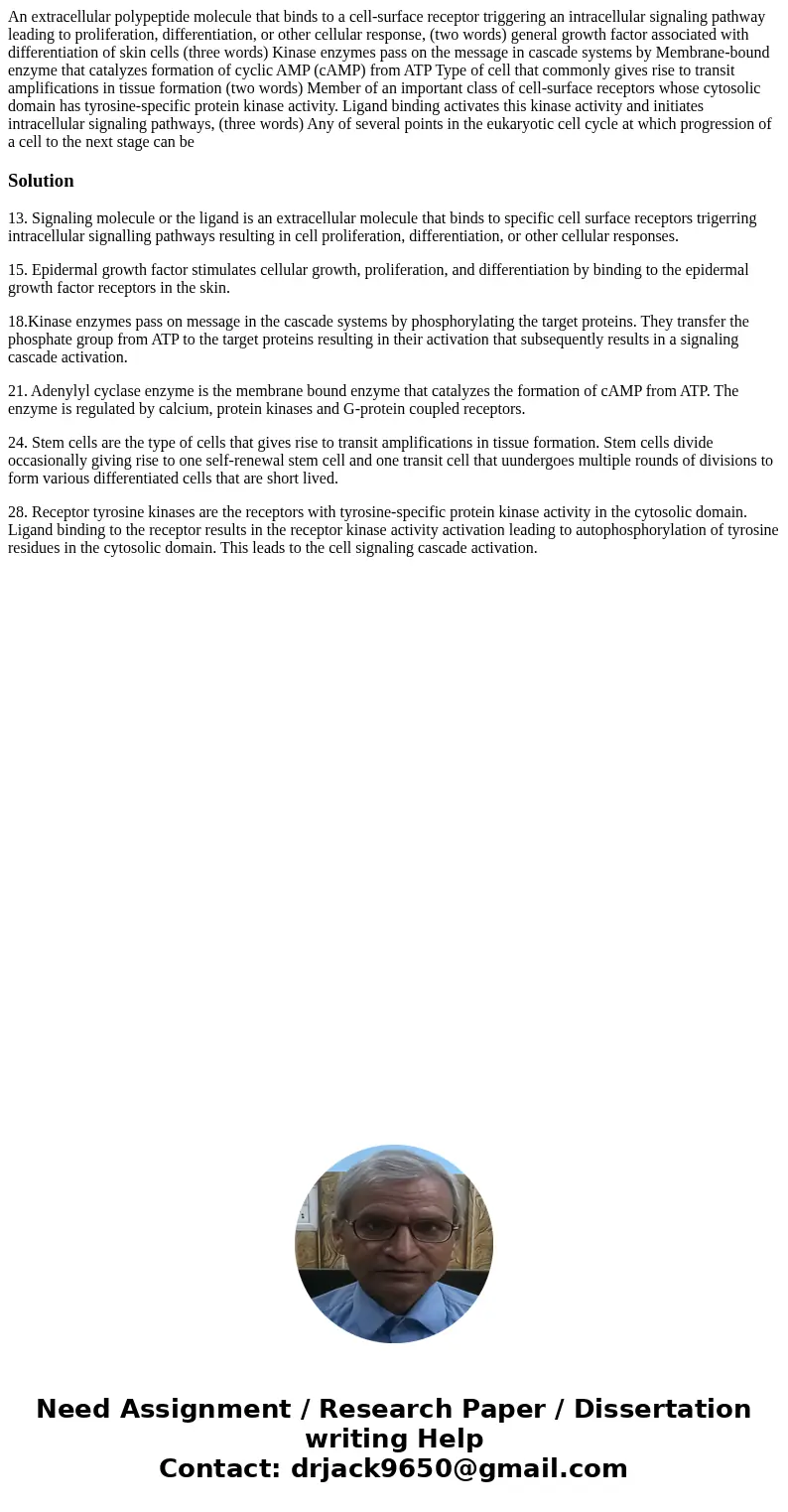An extracellular polypeptide molecule that binds to a cellsu
Solution
13. Signaling molecule or the ligand is an extracellular molecule that binds to specific cell surface receptors trigerring intracellular signalling pathways resulting in cell proliferation, differentiation, or other cellular responses.
15. Epidermal growth factor stimulates cellular growth, proliferation, and differentiation by binding to the epidermal growth factor receptors in the skin.
18.Kinase enzymes pass on message in the cascade systems by phosphorylating the target proteins. They transfer the phosphate group from ATP to the target proteins resulting in their activation that subsequently results in a signaling cascade activation.
21. Adenylyl cyclase enzyme is the membrane bound enzyme that catalyzes the formation of cAMP from ATP. The enzyme is regulated by calcium, protein kinases and G-protein coupled receptors.
24. Stem cells are the type of cells that gives rise to transit amplifications in tissue formation. Stem cells divide occasionally giving rise to one self-renewal stem cell and one transit cell that uundergoes multiple rounds of divisions to form various differentiated cells that are short lived.
28. Receptor tyrosine kinases are the receptors with tyrosine-specific protein kinase activity in the cytosolic domain. Ligand binding to the receptor results in the receptor kinase activity activation leading to autophosphorylation of tyrosine residues in the cytosolic domain. This leads to the cell signaling cascade activation.

 Homework Sourse
Homework Sourse